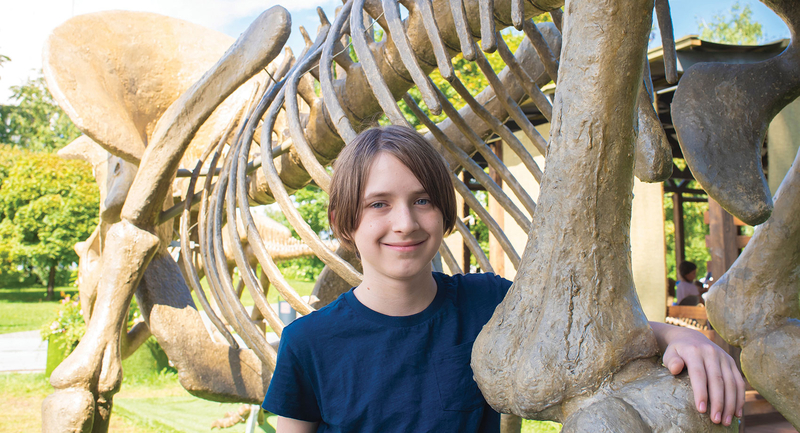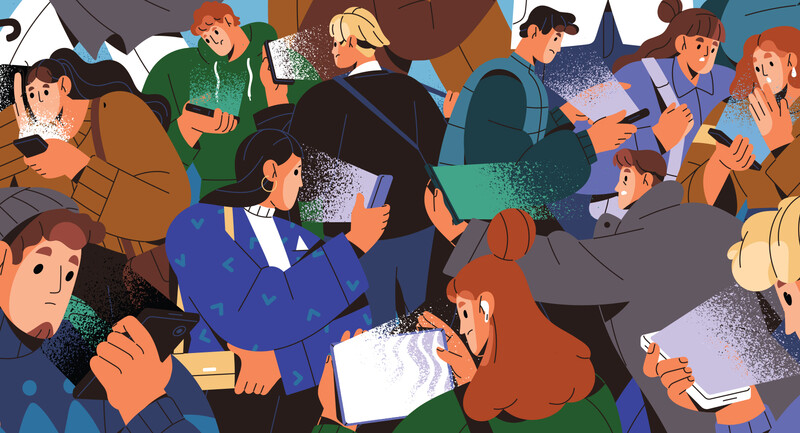Because Ms. Thompson was committed to making her 3rd grade classroom a more engaging and accessible learning environment, she looked to the Universal Design for Learning (UDL) framework to integrate strategies into her upcoming unit on character growth and development. She had learned about the powerful effects of universal design’s three-part framework, which incorporates multiple means to engage students, presents content using multiple modes, and enables students to show their learning in a variety of ways.
To spread her love for literature in an experience that was accessible to all levels of readers, she introduced daily read-aloud sessions. Tapping into her flair for the dramatic, she brought the stories to life and captivated her audience, quickly making this time a classroom favorite. One afternoon, after reading a particularly suspenseful section of Charlotte’s Web, she closed the book with a smile. “I love seeing how absorbed you all are during our read-alouds,” she said. “Now, let’s dive deeper into the story on your own. You can continue reading this chapter in our cozy reading corner, at your desks, or sprawled out in the common area. As always, the book is available on your devices, so you can choose to read it there, read the physical book, or listen to the audiobook.”
Then Ms. Thompson overheard two students conversing. “I’m just going to listen to the audiobook—it’s easier,” Jacob whispered, with Liam quickly agreeing. “Exactly,” he replied. “Me, too!” This gave her a twinge of concern. She knew that Liam struggled with reading and could benefit from the audiobook, but she also wondered if his near-exclusive choice of audio could hinder his reading development.
During the parent-teacher conferences later that week, several parents expressed concerns that validated her own. Their children were not engaging in active reading at home, relying solely on audiobooks. Ms. Thompson realized she needed to reassess her strategy. She understood that although her approach to using read-alouds and audiobooks was an excellent way to remove barriers for students who were not decoding on grade level, students also needed to spend time in the productive struggle of reading—outside of decoding time. She wondered, Where is the line in removing barriers but still pushing students to their potential?
The Importance of Productive Struggle
Think of a time when you knew something was going to be difficult, but you worked hard through the struggle, did it anyway, and succeeded. That experience was what noted psychologist Albert Bandura (1997) called a “mastery experience.” Mastery experiences are those successes we have under the condition of some degree of struggle. Bandura called mastery experiences “the most influential source of efficacy information because they provide the most authentic evidence of whether one can muster whatever it takes to succeed” (p. 80). Productive struggle, this effortful process of grappling with challenging tasks, is essential for deep learning and growing self-efficacy. Rooted in Vygotsky’s (1978) zone of proximal development (ZPD), productive struggle involves engaging students in activities that are just beyond their current abilities but still achievable with appropriate support.
The integrated concepts of mastery experiences and ZPD underscore the importance of creating opportunities for students to stretch their abilities, learn from their mistakes, and achieve mastery through persistent effort. As important as it is to design experiences that enable students to access content and be successful, we have to be careful not to remove all struggle. A task that’s too easy for a student may provide temporary comfort, but a lack of cognitive demand takes away their opportunity to deepen their understanding and skills in the content area. It also takes away their opportunity to grow their skills in expert learning, such as those involved in metacognition and persistence (Hiebert & Grouws, 2007).
Over time, students who are continually insufficiently challenged tend to become disengaged and complacent, exerting lower effort and gaining only superficial learning. As a result, some fail to develop resilience and perseverance with difficult tasks (Byrnes, 2021; Dweck, 2006).
Success with just the right level of challenge encourages a growth mindset as students learn to view challenges as opportunities for growth and to persist despite difficulties (Dweck, 2006). Learners need to succeed in completing challenging learning tasks—and they need to attribute that success to their own cognition and effort.
To be clear, there can be too much of a good thing. When the perceived struggle is too great and students don’t see they have a shot at success, this harms their outcomes. They can become overwhelmed and frustrated and lose motivation and self-efficacy. Challenging, yes. Impossible, no. Failures in tasks that are too challenging can cause students to doubt their abilities and feel paralyzed by the difficulty (Bandura, 1997; Byrnes, 2021), causing them to “check out” from the task at hand (Hattie, 2009). Students who continue to experience failures in tasks that feel too difficult can come to believe that they don’t have the ability to succeed in that skill, that subject, or even with school in general (Bandura, 1997).
Three Crucial Understandings
The UDL framework helps us create more engaging learning experiences, more comprehensible content, and assessments that better capture student learning. Grounded in a wealth of research, this work leads to powerful gains for students (Al-Azawei et al., 2016; Rao et al., 2014).
But as easy as it is to get excited about this approach, there are some crucial understandings around UDL that, if missed, can lead students to fall out of the zone of productive struggle—just as Ms. Thompson is finding.
Understanding 1: UDL does not mean modifying content or changing the success criteria.
Accommodations and modifications are adaptations we make to help individual students access the curriculum, often within the context of individualized education programs (IEPs). But clarity about the difference between the two is fundamental to universal design. Because UDL is about choice and flexible pathways, and not about changing expectations or altering success criteria, the supports we build into our lessons and units need to function as accommodations, not modifications.
Accommodations do not change the success criteria. For instance, Ms. Thompson used audiobooks to support comprehension. The audiobook also supports decoding, but the success criteria are about comprehension. As long as decoding isn’t a success criterion, audiobooks function as an accommodation. Said another way, accommodations provide support for a specific skill or understanding—in this case, decoding—when the success criteria are about a different skill or understanding—in this case, comprehension (Jung, 2017). When we “bake” accommodations into our lessons and offer them to all learners, they’re no longer individualized accommodations; they’re now simply a part of the universal design of the learning experience: firm goals, flexible means.
Modifications, on the other hand, do alter the success criteria. Modifications are supports for the very skill or understanding being taught (Jung, 2017). For example, if we’re teaching a lesson on delivering spoken presentations, many of the choices we give students wouldn’t modify the success criteria. Students could choose to do the presentation live or record it; they could present to a large or small group; they could stand up or sit down. But if we gave students the option of writing down their presentation instead of orally presenting it, that changes the success criteria because the lesson was about spoken communication. Modifications are an important part of our teaching practice, but modifications are not a part of UDL—they aren’t options and supports we offer to everyone.
A task that’s too easy for a student takes away their opportunity to deepen their understanding and skills.
Understanding 2: UDL does not mean that all of the choices are always available.
Student choice is one of the easiest and best ways to build joy in learning and skills in autonomy. But not all choices are equally beneficial. Although we do want classrooms that are overflowing with choice, we don’t always need to offer all of the choices. Ms. Thompson should keep audiobooks as part of the menu of options in her class, but there are times when she can offer different choices, while requiring her students to read the text.
Key to our decision-making is remembering that UDL is about removing barriers to learning—not removing the learning opportunity—and that students are not all in the same place in their learning. What each student needs to be “in the zone” will vary. Our formal and informal assessment of students’ learning on critical, transferrable skills form the foundation of our planning for what each student needs (Jung, 2024).
Understanding 3: UDL includes self-reflection as a crucial element.
Teachers are not only tasked with identifying the options that match a student’s zone of productive struggle, but they also have a role to play in guiding students to become self-aware, to self-assess, and to self-direct their learning. For example, using mnemonics to help students with memory retrieval is effective, but teaching why mnemonics are useful prepares them for a lifetime of owning this strategy. We want students to learn what works for them, understand what it feels like to be in the zone of productive struggle, and call on their own strategies for persisting there. These skills are the ultimate in transferability.
For instance, a teacher might explain the following:
Because I’m traveling this weekend, I’m going to choose the audiobook version of the text I’m reading because it’s fiction. The audiobook will let me keep up with the reading. However, for the nonfiction book on teaching I’m reading, I’m sticking with the hard copy. I prefer that because I want to highlight, annotate, and refer back to the text.
To help students develop their metacognition, teachers can incorporate self-assessment and reflection into their lessons when offering students choices by using a graphic organizer like the one shown in Figure 1.
By engaging in this work, students learn to assess their own skills and knowledge and make informed decisions about how to push themselves in ways that cause growth. These reflections also give teachers important feedback on how to respond, differentiate, and design upcoming learning experiences.
Bringing Back the Struggle
Reflecting on the parent conferences, Ms. Thompson knew students needed the option of audiobooks. But they also needed to spend more time decoding text. The next day, she introduced the reading tasks differently. “I know many of you love our audiobook options,” she began, “and that’s great! But I also want to make sure that we’re all practicing our reading skills. So, I have a challenge for you.” She then presented a menu of reading options on the whiteboard:
Read the physical book only, independently.
Listen to the audiobook while following along in the physical book.
Partner read with a classmate, taking turns reading the physical book aloud.
Partner listen to the audiobook, taking turns reading selected passages aloud.
Ms. Thompson explained:
Each day, I want you to choose one of these four options. But here’s the important part: you must think carefully about your choice. Ask yourself, Why am I choosing this option today? What skills am I practicing? Am I challenging myself just the right amount? It’s OK if you sometimes choose a lesser challenge, but taking on just the right challenge should be our goal. That’s how we all learn and grow. If I see that you need to push yourself more or that you should choose certain options for an experience you need, I’ll talk through that with you during our mini-conference to make sure you’re getting the most out of this work.
Over the next week, Ms. Thompson met with each student individually to co-reflect with them on how they were making choices in their learning and to set personalized reading goals. For Jacob, whose decoding skills were on target but who relied too heavily on audiobooks, the goal was to read one chapter in the physical book independently each week. For Liam, who struggled with reading and avoided the written text altogether, the goal was to listen to one chapter each week while following along with the text.
As the days went by, Ms. Thompson watched as her students engaged with their reading in diverse ways, each paying attention to how they were pushing themselves as readers. At the end of the unit, Ms. Thompson asked her students to reflect on their learning. “I used to think I was bad at reading,” Jacob shared, “but now I realize I just needed to find the right balance of challenging myself. Listening to the audiobook helped me enjoy the story, but trying to read on my own helped me grow as a reader.”
Liam stayed behind after school to speak with Ms. Thompson privately. “This was a hard book for me,” he said. “I didn’t feel like I could get much out of it. But following along with the book while listening to the audiobook helped me understand the story better. I can keep doing that at home, too.”
What UDL Does Mean
Universal Design for Learning provides a powerful framework for creating engaging and effective learning environments. When implemented thoughtfully, it empowers students to take control of their learning as they grow to be self-aware, self-directed, lifelong learners who find their zone of productive struggle and build stamina for persisting there. However, it’s important to remember that UDL does not mean modifying the essential content and success criteria. Nor does it mean offering unlimited choices. Instead, it means providing multiple pathways for students to access and engage with the content, while still ensuring high expectations and the productive struggle and reflection we all need. In doing so, teachers can create classrooms where all students are engaged, supported, challenged, and growing, not only in their academic abilities, but also in their metacognition, confidence, motivation, and love of learning. And that is a truly universal goal.
Copyright © 2024 Lee Ann Jung
Reflect & Discuss
➛ How might you introduce more productive struggle in a lesson you currently teach?
➛ Describe a time when you engaged in productive struggle. What insights can you apply to your teaching?









